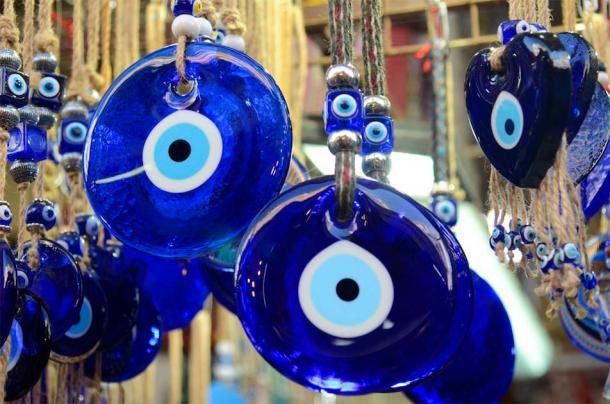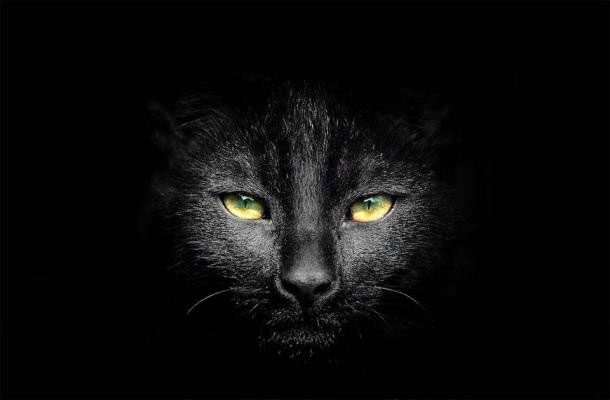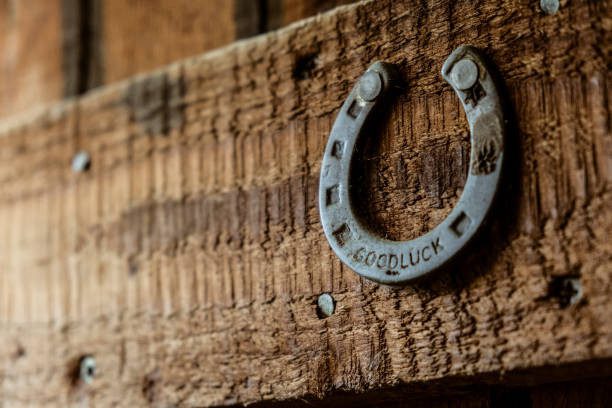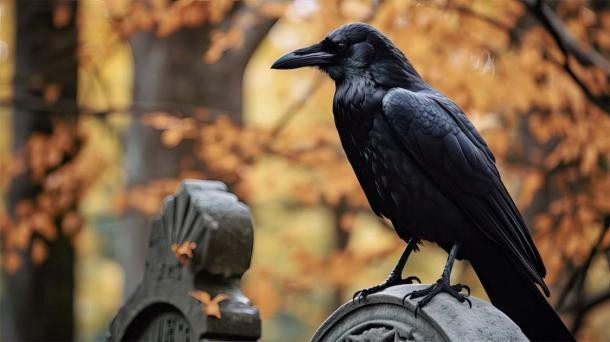In today’s era of modern science, many strange superstitions still persist in various countries around the world. These superstitions have long taken root in the human imagination, weaving threads of fear and fascination into the fabric of human history.
The Truth About Superstitions Around the World
- 1. The Evil Eye
- 2. Avoiding Walking Under Ladders
- 3. Friday the 13th
- 4. Black Cats – Friends of Witches and Demons
- 5. Breaking a Mirror – Seven Years of Bad Luck
- 6. Opening an Umbrella Indoors – A Rain of Misfortune
- 7. Horseshoes – Holders of Good Fortune
- 8. Spilling Salt – Blinding Evil Spirits
- 9. Whistling at Night
- 10. Crows – Omens of Darkness
Many ancient superstitions have become so ingrained in people’s psychology that even today, although they may not believe in them, they still unconsciously follow these practices. While the origins of these superstitions are fascinating, based on supernatural folklore, people often seek practical reasons to justify their beliefs. Let’s explore some of the most chilling ancient superstitions in history and see where they come from.
1. The Evil Eye

Due to an ancient superstition, “the eye” in blue and white is commonly used in both Greece and Egypt to ward off the effects of the evil eye. (Image: Adobe Stock).
One of the most widespread ancient superstitions in the world is perhaps about the evil eye. Deeply rooted in human history, with origins extending over 3,000 years, this belief holds that malicious glares can bring harm and misfortune to unsuspecting victims.
The superstition regarding the evil eye can be found in many cultures, but the earliest traces of it can be seen in ancient Mesopotamia. Clay tablets from the 7th century BC not only provide evidence of the belief in the evil eye but also show the incantations used by the Mesopotamians to ward off bad luck.
During the Roman Empire, a type of talisman in the shape of an eye was created with the hope of controlling the evil within humans. This belief quickly spread through the Islamic world, where the eye is referred to as Nazar, and in India as Buri Nazar.
These eyes are typically colored blue and white. To this day, this type of eye talisman remains popular in Greece and Egypt, often used to decorate homes or worn as jewelry in hopes of warding off the negative impacts of the evil eye.
2. Avoiding Walking Under Ladders
The ancient Egyptians avoided walking under a ladder. They believed that when a ladder is leaned against a wall, it forms a triangle, becoming one of the most sacred symbols for them (similar to a pyramid). Walking under the ladder would break this symbol and offend the gods. This strange superstition often surprises many.

The Egyptians avoided walking under a ladder. (Image: Getty Image).
This superstition has existed for a very long time and is associated with many spiritual factors. Ancient people believed that walking under a ladder would bring misfortune, even summoning evil spirits and offending the deities.
This belief later spread to ancient Rome, where ladders were associated with the divine. From there, it continued to spread to the rest of Europe.
In medieval Europe, ladders were no longer associated solely with the divine. Rather than just a construction tool, they also resembled gallows. Ladders were seen as closely linked to death and misfortune. Consequently, the fear of walking under ladders became more pronounced, and people increasingly avoided passing under triangular objects.
While walking under a ladder is not inherently terrible, this superstition seems to have deeply penetrated the subconscious of each person. The advice to avoid walking under ladders might actually be a sound recommendation for health and safety.
3. Friday the 13th
Friday the 13th combines two superstitions. Friday is considered an unlucky day, rooted in Christian tradition. It is believed that Jesus was crucified on a Friday, making this day of the week unlucky.

Friday the 13th is seen as an omen of bad luck. (Image: Getty Image).
There are many reasons why people fear Friday the 13th. No one can explain the origin of triskaidekaphobia, the fear of the number 13.
According to some historians, this fear originates from ancient times when the number 12 was considered a perfect number, often used for measurements or calendars. This made its neighbor, the number 13, an imperfect or unlucky number.
Others believe that the fear of 13 stems from Norse mythology, where Loki was the 13th guest at a sacred dinner, causing distress among the other gods and bringing evil and suffering into the world.
Friday the 13th is also associated with many horrific events that instill fear in people.
On Friday, October 13, 1307, King Philip IV of France ordered the arrest of the notorious Knights Templar. Many of them were subsequently tortured and executed, some burned at the stake. This is considered quite unlucky.
Regardless of its origins, over the years, Friday the 13th has gained notoriety, reinforced by unfortunate events like the crash of Uruguay Air Force Flight 571 on Friday, October 13, 1972. Popular culture has also helped solidify this superstition with the film “Friday the 13th.”
4. Black Cats – Friends of Witches and Demons
Black cats or lynxes have long caused fear in many people due to the misfortune they are believed to bring. In reality, black cats can be harder to care for than cats of other colors. The superstition surrounding black cats dates back a long way.

The ancient superstition surrounding black cats is as old as civilization itself. (Image: Adobe Stock).
In ancient Egypt, cats, including their black counterparts, were revered and associated with divinity, particularly the goddess Bastet. Killing a cat, even accidentally, was considered a grave crime.
However, several centuries ago, especially in medieval Europe, cats became infamous for being associated with witches, witchcraft, and even Satan. It was believed that cats served as familiars for witches, allowing them to communicate with demons, and witches could transform into black cats to carry out their nefarious deeds.
As a result, many witch hunts occurred in the 16th and 17th centuries, with countless black cats being killed alongside those deemed witches.
Not everyone despised black cats, however. In certain regions of Europe, particularly in Scotland and Ireland, black cats are considered lucky. This stands in stark contrast to the popular superstitions in other areas. Today, black cats continue to symbolize different meanings across various cultures. Some see them as omens of bad luck, while others view them as symbols of good fortune.
5. Breaking a Mirror – Seven Years of Bad Luck
The belief that breaking a mirror brings seven years of bad luck dates back to ancient Greece and Rome when it was believed that mirrors contained a part of a person’s soul. Breaking a mirror not only damages the physical reflection but also harms the spiritual essence of a person, leading to misfortune.

Breaking a mirror will bring seven years of bad luck. (Image: Adobe Stock).
Like many other ancient superstitions, this concept persisted into the Middle Ages when mirrors were rare and expensive, amplifying the belief in their mystical properties. Asia also has a similar superstition. In ancient China, mirrors played a role in predicting the future through divination. Instead of harming the soul, breaking a mirror was seen as disrupting the connection with the spirit world, resulting in misfortune.
6. Opening an Umbrella Indoors – A Rain of Misfortune
In most places around the world, opening an umbrella indoors is considered an extremely bad act or unlucky, or both.

Opening an umbrella indoors is considered a sign of bad luck. (Image: Getty Image).
In Europe, this superstition is believed to originate from Victorian England. The reasoning behind it is quite practical. During this time, umbrellas were a relatively new invention, and their spring mechanism made them cumbersome to use indoors. Opening an umbrella in a confined space could lead to accidents, property damage, or even injuries to oneself or others.
In Asia, the superstition has a more ominous origin. Opening an umbrella indoors is considered taboo as it resembles actions performed at funerals, such as opening a canopy for the deceased. It is believed that opening an umbrella indoors (especially at night) can trap or anger the spirits of the departed, leading to bad luck. In Japanese folklore, there is even a type of yokai (spirit) called Kasa-obake, which resembles an umbrella and enjoys causing mischief.
7. Horseshoe – Holding All the Luck
Some civilizations, such as the Greeks, view horseshoes as a charm against evil spirits. As a result, people often hang horseshoes above their doors to protect their families from malevolent forces.

Horseshoes are seen as lucky. (Photo: Getty Image).
The superstition surrounding horseshoes and their supposed power to bring good luck has spread throughout history, rooted in the beliefs and folklore of Europe. The superstition regarding horseshoes has two distinct aspects.
Firstly, in ancient Europe, iron was believed to have protective properties. Iron was considered pure and could thus be used to ward off evil forces such as demons, spirits, and even witches. Secondly, horseshoes, like the Moon, were linked to ancient pagan Moon gods. Over time, horseshoes came to be regarded as symbols of good luck.
During the Middle Ages in Europe, people began hanging horseshoes over doorways, with the ends pointing upwards. It was believed that this formed a protective barrier, driving away malevolent supernatural forces and bringing prosperity to the household.
Today, the orientation of a hung horseshoe holds significant meaning. Hanging it with the ends pointing upwards is believed to catch and hold good fortune, while hanging it downwards is thought to let good luck spill out. Horseshoes remain a symbol of luck in many cultures.
8. Spilling Salt – Blinding Evil Spirits
For the Romans, salt symbolized purity and was used in various religious activities, particularly in purification rituals. Spilling salt was considered an offense to this sacred rite and was believed to anger the gods. Angering the gods, of course, would lead to misfortune.

An ancient superstition suggests that spilling salt will anger the gods. (Photo: Adobe Stock)
In medieval Europe, salt was an expensive commodity, and spilling salt was thought to attract the attention of mischievous spirits or witches, bringing about misfortune.
To counteract this bad luck, a common custom arose: throwing a pinch of spilled salt over one’s left shoulder, where it was believed that evil spirits lurked. This gesture was thought to ward off demons and avoid subsequent misfortune.
Salt also continued to be associated with purification. It was believed that demons and spirits could not cross a line of salt, meaning that sprinkling salt along windowsills and doorways could repel evil entities.
9. Whistling at Night
Darkness has been a fear deeply ingrained in the psyche of many for centuries. Because of this, in various cultures, night has always been associated with the mysterious, where it conceals the inexplicable and invisible forces.

Photo: Getty Image
Many cultures believe that whistling at night brings bad luck. It is seen as an invitation, a way to call forth spirits or supernatural beings into one’s presence.
This belief was particularly pronounced in superstitious medieval Europe, which was obsessed with demons. The night was regarded as the dwelling place of witches, evil spirits, and other unpleasant creatures, and whistling was thought to attract these entities, possibly leading to misfortune, illness, or even possession.
Whistling at night on land was bad enough, but doing so at sea was even worse. Sailors, by nature a superstitious group, historically viewed nighttime whistling as an omen of misfortune on the open sea. The eerie sound of the wind whistling in the darkness was considered a forewarning of impending storms or other maritime disasters.
10. Crows – Omens of Darkness
Not only do black cats have a complex relationship with ancient superstitions. Crows have been seen both as omens of death and symbols of wisdom throughout human history.

Crows are seen as omens of death and symbols of wisdom. (Photo: Adobe Stock)
In Norse mythology, the lord of the gods, Odin, is always accompanied by two crows, Huggin and Muninn. By his command, they fly across the world to bring information back to their master.
Meanwhile, another pagan god, Morrigan, also carries a crow with her. However, this deity’s reputation is more negative, as she is often associated with death.
Additionally, the crow’s black feathers and its natural behavior, such as scavenging and its haunting calls, have led people to regard them as harbingers of death and doom. In some beliefs, seeing a crow or crows near one’s home is considered an ill omen.
Similar to black cats during the witch hunts of the Middle Ages, these birds were sometimes thought to be associated with witches. They were also believed to be spies for dark forces.
Human history is filled with countless superstitions, especially those that send chills down the spine and thus possess a certain allure. The world of superstition is a labyrinth of beliefs and cultural perceptions that have influenced human behavior for millennia. From the ominous gaze of the evil eye to the horror of Friday the 13th, these superstitions have cast their shadow over history, reflecting our innate desire to explore the unknown.




















































